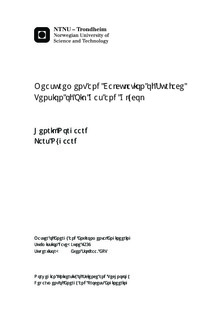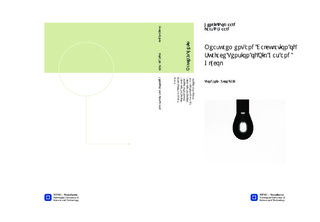| dc.description.abstract | The importance of surface tension in separation design was evaluated in this report. Surface tension was found to have importance when calculating essentialdesign parameters, like droplet size, which is is fundamental in several vessel designoperations. Other impacts of surface tension in separation are the ability tosustain a liquid film and avoid droplet re-entrainment into the gas flow, both beingdiscussed in the report. Miscalculation of surface tension could lead to incorrectsizing of separation equipment, subsequently causing expensive fault in operationand decreased separation effect.The main objective of this thesis was to experimentally measure surface tensionwith the pendant drop technique. Although surface tension was the main task,density and solubility data were also collected and evaluated, as they too areimportant parameters in separator design. The measurements were carried outon MEG/water systems because of low availability of such data in the literature.The deviation of the surface tension measurements was calculated on the basis ofrecommendations from ISO, and the total average deviation for all mixtures wasstated to be 2.00%.The second objective was to evaluate models for the calculation of surface tensionin process simulation software. The simulation tools PRO/II, HYSYS, PVTSimand NeqSim were used for calculation. PRO/II and HYSYS use simple models thatare based on pure component values. PVTsim utilizes the well-known parachormethod when simulating hydrocarbon systems, while for MEG/water systems ituses a model based on the corresponding state theory. NeqSim uses the most complicatedand computational demanding model, the gradient theory, which is basedon thermodynamics. Some of the software have additional models implemented,but in this thesis the default models have been used.The MEG/water and hydrocarbon systems were simulated in the software, andthereafter compared against the experimental data.The results of the comparison regarding hydrocarbon systems showed two distincttendencies. Firstly, the performance of PRO/II and HYSYS was not adequate.They both were, with a few exceptions, overestimating the surface tension for allmixtures. Second, even though the performance of both PVTsim and NeqSimcould be termed satisfactory, NeqSim was superior to the estimations of PVTsimthroughout most of the experimental data. The only exception was for the ternarysystems, on which the base of surface tension data was rather insufficient.The results of the comparison regarding glycol systems showed that all softwareoverestimate the surface tension. NeqSim was once again the software with thebest accuracy, and the CPA equation of state was the overall preferred choice. Incontrast to hydrocarbon mixtures PVTsim now has a large discrepancy throughout.However, the accuracy improved drastically for the 50 wt% MEG/50 wt%water mixture. PRO/II and HYSYS performed better than they did on hydrocarbonmixtures, especially for the 100wt%MEG mixture. However, as water wasadded to the composition, PRO/II s deviation increased substantially. | nb_NO |

